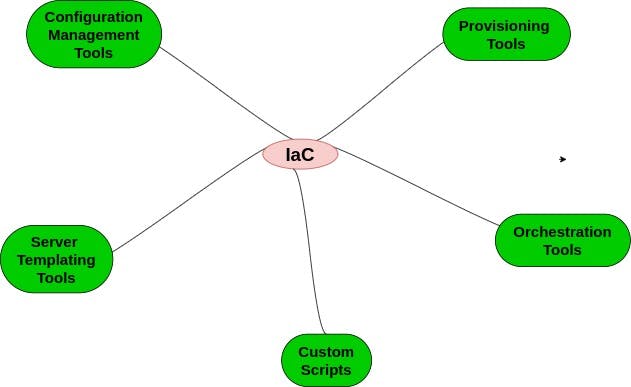Understand Infrastructure as Code: Advocacy, Tools and Best Practices
Since the invention of Cloud technology, the issue of setting up infrastructures to deploy applications, and manage resources that have high compute consumption, and time has been brought to a minimum.
Organizations no longer need to invest in expensive computers and other technological equipment to set up their data centres when tons of computing services are rendered by Cloud providers.
The infrastructure being provisioned through IaC is Cloud infrastructure. These infrastructures can be virtual machines, storage devices, network configurations and other computing needs.
IaC seeks to codify the Configuration, provisioning, execution and management of cloud infrastructures. What this solves is to make the process entirely free of human errors, reduce wastage, rid of the issues of environmental drift, ensure consistency and reusability of processes, and give users heads up on what their infrastructures will look like before they deploy the actual resources.
IaC enables DevOps engineers to take an entire infrastructure and define it within a code file. This way, teams will know about all that is being deployed and the current state of infrastructure.
IaC agitates automation for optimal use of computing resources, automatic scaling, and speed. For instance, with IaC, the code file which was used to deploy an application today can be reused in similar cases tomorrow, shortening the time it would have taken to write a new code or manually provision an infrastructure to deploy those resources.
IaC makes use of configuration files which are maintained in a version control system such that it is possible to version changes or releases made in the infrastructure and roll back the changes to a certain period.
Classification of IaC Tools
On a broader scale, IaC tools are categorised into two - declarative and Imperative tools. Declarative tools in IaC are tools that define the end of what is expected after the configuration as well as make and manage API calls.
Imperative, are IaC tools that are used to tell the system what you want to happen and the sequence in which you want it to happen.
Within these two broad classifications are a further breakdown of tools by the actual technological relevance and the actual work they do.

- IaC Configuration Management Tools
These are a range of imperative tools which are commonly used in the installation, management of software installation and maintenance in existing on-prem or cloud infrastructure such as servers, databases, networking devices, etc. Configuration Management Tools are consistent as they have a standard structure of code and this makes it easier to manage and run multiple resources at the same time.
Configuration Management tools can be used in a version control repository. This allows us to reuse them and distribute resources as needed. As with other IaC Tools, Config management tools are idempotent - what this means is that one can run the code multiple times and for each time there are run, the Configuration does not start afresh but only apply the changes that are necessary to bring the environment into the current defined state without making new changes to configurations that are already in their perfect place.
Config management tools: Ansible, Chef, Puppet, SaltStack, etc.
- Server Templating Tools
These tools are used to build templates together with all of their dependencies. to create custom images of an application or containers. These images are already configured together with all the binaries and dependencies they will need to run and scale eliminating the need to install separate software, configure operating systems or any other virtual machine for the and can be reused over and over.
What this means is that once a virtual image is built and deployed, it is designed to remain unchanged. If there are changes to be made in the image, instead of updating the running instance, the image is updated and a new instance is deployed using the updated image.
Tools: docker, packer, vagrant, etc.
- Resource Provisioning Tools
These are a range of tools used in provisioning cloud resources and infrastructural components in a simple declarative configurations.
The infrastructure provisioned by these tools includes - Virtual servers, databases, VPCs, Subnets, security groups, storage, etc. These resources are peculiar to unique cloud providers.
Tools: Terraform, Cloudformation, etc.
Other IaC Configuration Tools
Scripts - these are scripts written in any scripting language with configurations on how to make Cloud API calls and deploy or provision infrastructures on different cloud providers. Eg: bash script, python script, etc.
Orchestration tools - These tools are used for orchestrating containers used to define application deployment into an environment that has been predefined. EG: Kubernetes.
IaC Best practices
Employ code as the single source of truth for infrastructure configuration.
Ensure code is version controlled for easy tracking of all the changes made.
Ensure configurations are properly documented to enable other team members working on the project to understand the content of the code files.
Review and validate configurations to be able to see the changes made before the final deployment. This will help stop unintended changes in the infrastructure and prevent destruction or wrong provisioning of resources.
Ensure that the IaC configurations are properly scanned for misconfigurations before deployment.
If IaC is integrated with other production pipelines, ensure automated scanning and deploy security solutions to identify security Vulnerabilities, defects and infrastructural drifts. This will signal if anyone has manually made changes in the resources against what is stipulated in the configuration.
Avoid hard coding of credentials through proper secret management.